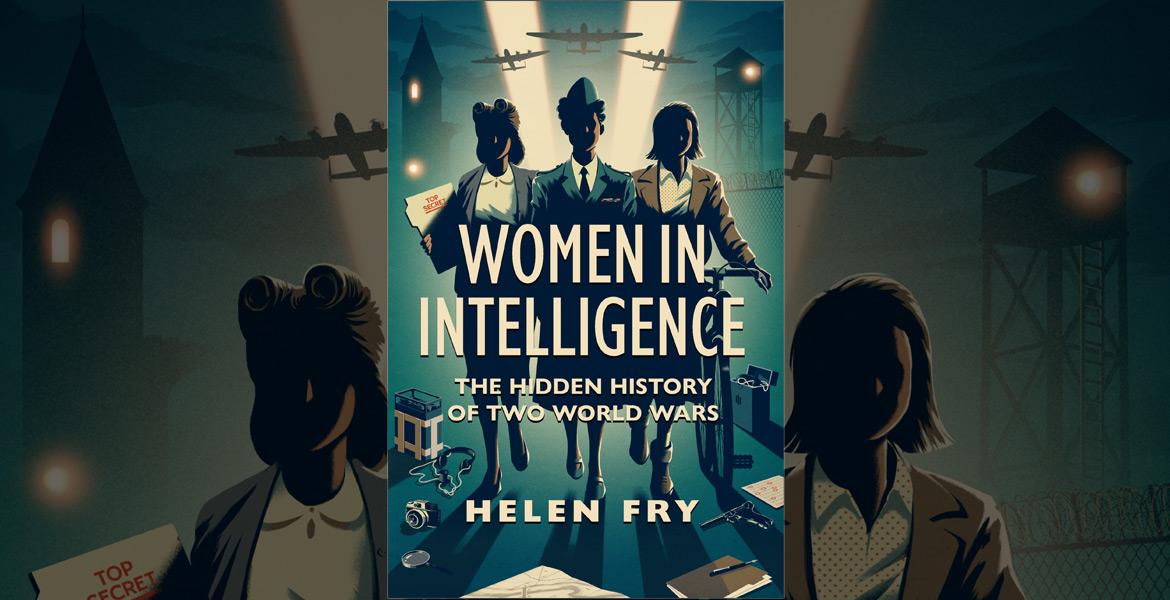The Spies Who Should Be Remembered
Guest article by Helen Fry
My latest book Women in Intelligence is the culmination of extraordinary discoveries during my research across some two decades; research that uncovered the unexpected and exciting contributions of women. That many of these discoveries were accidental, whilst going through the declassified military intelligence files, says much about the invisibility of these women in our narratives, especially in civilian and uniformed intelligence roles. To date their stories have been largely missing from the wider narratives of World War One and World War Two, as well as in women’s history. Histories of intelligence, spies and espionage have traditionally contained few women in their storylines and even less in the indexes to the books. Women were the missing dimension, their legacy largely obscured by two main factors: historians’ unconscious bias in excluding them from their research and an assumption that if women’s roles were not evidenced, they must not have been of importance. Official secrecy has also played – and continues to play – its part in keeping some of their work hidden (as in the case of GCHQ, MI5 and MI6).

In the public consciousness, 'women in espionage' is linked to just a few femmes fatales, like Mata Hari who came to define the image of the female spy as an exotic seductress. This portrayal of women, alongside the casting of James Bond’s personal secretary as glamorous ‘Miss Moneypenny’, has proved extremely hard to shift in popular perceptions of female spies. The reality is so much more exciting and my book is about the female spies who should be remembered.
SOESpecial Operations Executive was a secret British espionage, sabotage, and reconnaissance unit working in occupied territory during the Second World War.
Much has been written in recent years on the Special Operations ExecutiveSpecial Operations Executive was a secret British espionage, sabotage, and reconnaissance unit working in occupied territory during the Second World War. (SOE), especially focusing on the female agents and wireless operators who were dropped into France from 1942. See for example Kate Vigurs, Mission France (New Haven and London: Yale University Press, 2021). Noor Inayat Khan (‘Madeleine’) was of Sufi Indian origin and the first female wireless operator to link up with the French Resistance. She was betrayed and executed in Dachau concentration camp on 13 September 1944, along with three other SOE colleagues. Also well known are Violette Szabo – posthumous recipient of the George CrossThe highest award bestowed by the British government for non-operational gallantry or gallantry not in the presence of an enemy. – and Odette Sansom (‘Lise’), who joined SOE in 1942 and worked as a courier behind enemy lines in France with the Spindle circuit. Of these three women, only Odette survived the concentration camp (Ravensbrück). Pearl Witherington was another who survived, having been a courier behind enemy lines in France, and went on to command 3,000 men after D-Day.
See for example Kate Vigurs, Mission France (New Haven and London: Yale University Press, 2021). Noor Inayat Khan (‘Madeleine’) was of Sufi Indian origin and the first female wireless operator to link up with the French Resistance. She was betrayed and executed in Dachau concentration camp on 13 September 1944, along with three other SOE colleagues. Also well known are Violette Szabo – posthumous recipient of the George CrossThe highest award bestowed by the British government for non-operational gallantry or gallantry not in the presence of an enemy. – and Odette Sansom (‘Lise’), who joined SOE in 1942 and worked as a courier behind enemy lines in France with the Spindle circuit. Of these three women, only Odette survived the concentration camp (Ravensbrück). Pearl Witherington was another who survived, having been a courier behind enemy lines in France, and went on to command 3,000 men after D-Day.
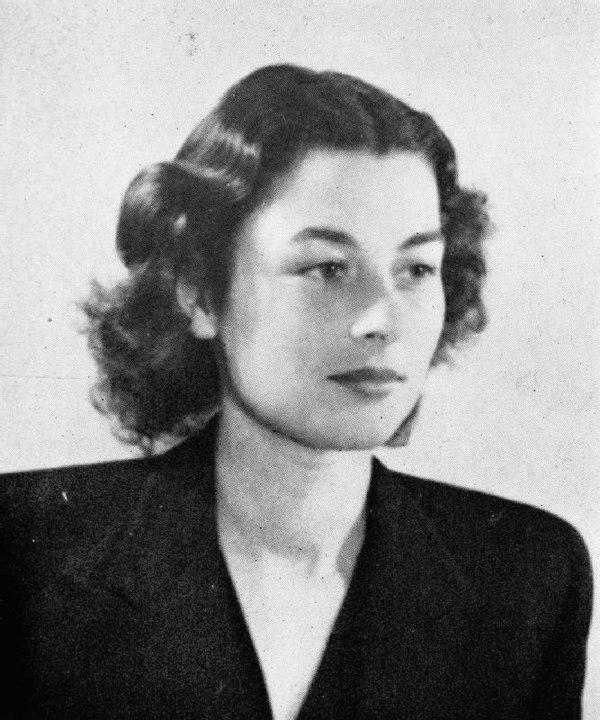
All had been sent on their missions by Vera Atkins (deputy head of F Section) who worked out of headquarters at Baker Street. Those who were based in Baker Street were known as the ‘Baker Street Irregulars’. Margot Morse was one of the women whose wartime career began as a secretary, but who went on to become the great organiser at SOE’s Registry. She was the hidden hand behind its planning and administration. Well educated women were the mainstay of the signals department, where they prepared SOE’s poem codes. They were all part of a necessary workforce.
Whilst F Section (France) has become the most well-known of SOE’s operations, it operated in other parts of Europe and theatres of war, including in Belgium and Denmark. Declassified files now reveal that SOE was not only engaged in sabotage and the destruction of enemy communications; it was also tasked with intelligence gathering and, rather than being a secondary role, it was their primary mission. So the study of women in SOE’s other theatres of war sheds a light, too, on the wider history of SOE.
Invisible Spies
Across two world wars, women living in occupied countries displayed extraordinary bravery and resilience in running spy networks and gaining intelligence for the Allies, often at great personal risk. They moved invisibly across occupied territories, and lived and died for the cause of freedom. Famously, British nurse Edith Cavell’s organisation in Brussels aided Allied soldiers to cross occupied territory and return to the UK. Speculation has been rife about whether or not she was a spy. It is now certain from declassified files that she spying for Britain and her agents were passing intelligence to the British, almost certainly to the organisation that soon became known as the Secret Intelligence Service (SIS, later MI6).
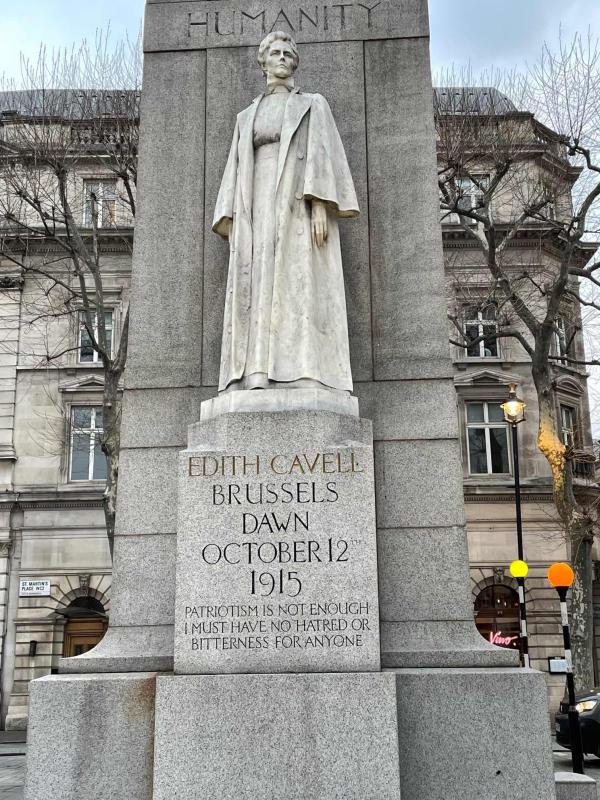
Women were prominent in another intelligence network in Belgium called La Dame Blanche (‘White Lady’) which operated in the First World War. The network had over 2,000 agents, at least a third of whom were women. Aged between 16 and 80, the women sat knitting outside their cottages, but in reality were observing the enemy troop movements by train as the train passed their doors. They knitted coded messages into jumpers and scarves, in which certain stitches represented particular German troops and regiments and how many. The knitted items were sent over the lines to the headquarters of British intelligence in France, where an intelligence officer decoded them. The Weimerskirch sisters ran a bookshop in Liège which became a ‘letterbox’ that functioned until the end of the war without being betrayed. Other women cycled around occupied countryside as couriers, delivering messages on tissue papers with the message written in invisible ink, and helpers who smuggled agents out of the country. The operations by La Dame Blanche provided vital information on enemy troops that could help British intelligence to predict where the next major German offensive was to occur. By 1918, the network needed to expand and four specialist squads were formed to recruit and enlarge the network – these squads consisted entirely of women.
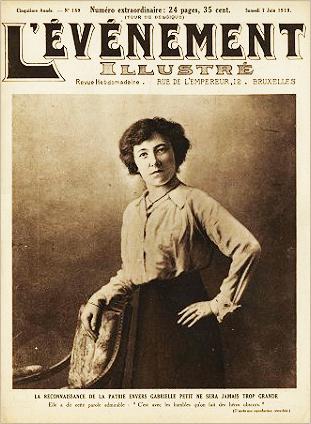
The consequences of discovery or betrayal were always serious, as in the case of Edith Cavell who was found guilty of espionage by the Germans and shot on 12 October 1915. Another courageous agent, 23-year-old Gabrielle Petit, who ran ‘The Alice Service’, again gaining intelligence for the Allies, was shot by the Germans the following year. She refused to be blindfolded before the firing squad and, as they raised their guns, she defiantly shouted out, ‘Vive la Belgique! [Long live Belgium!]'. For the women who lived to see the ArmisticeAn agreement made by opposing sides in a war to stop fighting. in November 1918, theirs had been a war that had given them roles previously never imagined in their restricted civilian lives. It was a war in which they had made a difference. This legacy would be followed and increased in the Second World WarA global war that lasted from 1939 until 1945..
In the next war, women were ready to operate again in clandestine networks behind enemy lines, including the Clarence Service in Belgium (a direct successor to La Dame Blanche) and Noah’s Ark. The latter was run by Marie-Madeleine Fourcade in France and her agents given the codenames of animals to obscure their real identity. These networks were primed with the urgent search for evidence of Hitler’s secret weapon sites (V-1 and V-2) and transportation of such, as well as providing new material on German troop movements in the occupied countries of Europe. Their work was both dangerous and prone to betrayal.
The ‘secretaries’ who worked undercover in MI6 stations abroad, on closer examination, were not conducting secretarial duties but running spy networks across Europe, the Middle East and across the world. They communicated with agents in invisible ink and undertook intelligence gathering, as well as gaining expertise in the particular countries where they were stationed. It has been seen that their knowledge and expertise would prove indispensable to SOE, MI5 and MI6 in the Second World War.
Just a desk job?
On the Home Front, the roles of women in intelligence were as important for providing information on the enemy. This included combatting enemy spies in contra espionage operations by MI5, postal censorship via the War Office and Home Office, secret work for Special Branch, as well as deciphering German naval codes by Naval Intelligence Division (NID), and interception and cryptanalysis by MI1(b) and its successor Bletchley Park. Across these intelligence organisations and agencies, women began to take on duties that in peacetime had been carried out by men. Women at Bletchley Park became code-breakers and cryptanalysts, with some of them continuing their career with GCHQ after the war. With the exception of SOE and Bletchley Park, there has been an unchallenged assumption that women fundamentally conducted routine desk jobs. While much secret work was routine and boring – for both men and women – a very different and much richer picture is emerging about the women who became experts in their field.
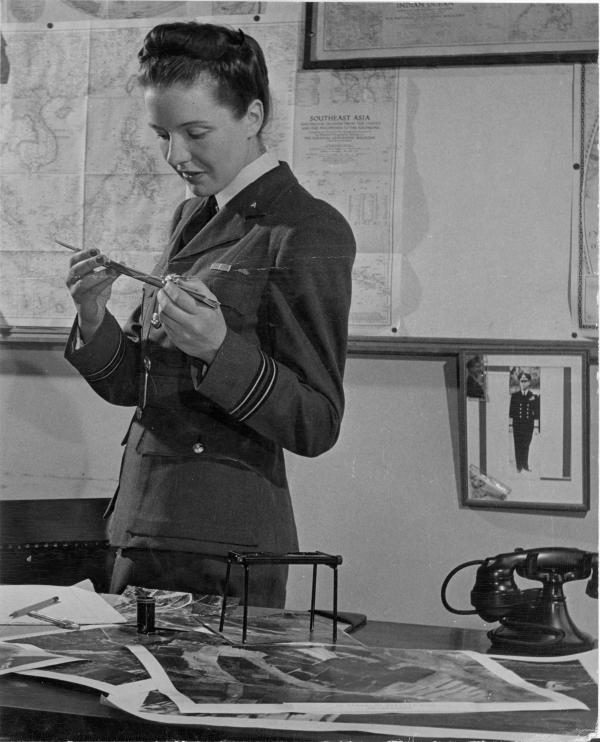
Women across all three services of Army, Navy and Air Force began to take on unusual and central roles in intelligence. They led intelligence sections and became specialists in their field, even if their salary and rank did not always match that of their colleagues. A good example were the first female interrogators of Naval intelligence who, from 1941 worked at three hush-hush sites outside London (Latimer House, Trent Park and Wilton Park), where the conversations of captured German officers and other ranks were secretly recorded for intelligence purposes. It was believed within MI9 – the branch of military intelligence to which they were attached – that using women as interrogators would disarm and disorientate the prisoners who were accustomed to being interrogated by a man.
For uniformed intelligencers, women became experts within the departments they were working. Constance Babington Smith (WAAF) worked as a photographic interpreter at the aerial intelligence site RAF Medmenham at Danesfield House, near Marlow. She formed and headed a new section called the Aircraft Interpretation Section. In late 1943, she identified the German V-weapons from aerial photography, providing interpretation of images which gave the Allies the intelligence they needed on enemy targets and installations. That same year, Miss Lee had joined Section 8K of the Operational Intelligence Centre (Naval Intelligence) in Whitehall, because of the increase of planning ahead of D-Day. She was placed in charge of all intelligence for the harbour defence activities between Cherbourg and le Havre on the coast of France. She is another extraordinary example, because her story shows for the first time that it was a woman who was responsible for all Naval intelligence in the region of the D-Day landings.
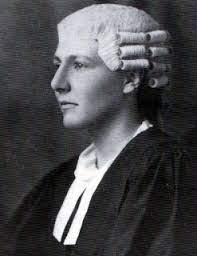
One of the women who shines in the history of MI5 was Jane Sissmore (Archer) whose greatest career achievement came in 1940 with her interrogations of Walter Krivitsky, the first major Soviet officer to defect to the West. She interviewed him daily for three weeks, and her subsequent report was described as a model of its kind. Already by 1929 she had been placed in sole charge of MI5’s department for covering Soviet espionage in the UK. It was remarkable, given that the department was almost totally male dominated. She, like other women, was a trailblazer who led the way for Dame Stella Rimington DCB to be appointed the first female director of MI5 in 1992, and the first female head of any of the world’s leading intelligence or security agencies. In 2023 Anne Keast-Butler was appointed the first female head of GCHQ.
Decades of silence
For the majority of women who had served in the two world wars, they returned to their old traditional lives. They carried with them the secrecy of their wartime roles, which they could never speak about – not even to their own husbands and parents. What emerges in my book is a complex picture, and one in which women contributed across all aspects of the British secret services. They carried out roles that made a difference to the end game. Their stories demonstrate that, in fact, they were not automatically restricted by their gender. Especially within military, naval and air intelligence, they were assigned their roles because they were either the best person for the job or had the skills to do so. Historically, women alongside their male colleagues have shaped the ways in which intelligence has been carried out and methodologies developed.
Today, declassified files and other archives make it possible to begin to restore many of the oft nameless women of intelligence to their rightful place in history. It has been a legacy hidden for far too long from our narratives. The work of historians will continue to reclaim this history.
Helen Fry's book, Women in Intelligence, is published by Yale University Press and available to buy now.
Read our review of Women in Intelligence here.
- Log in to post comments


